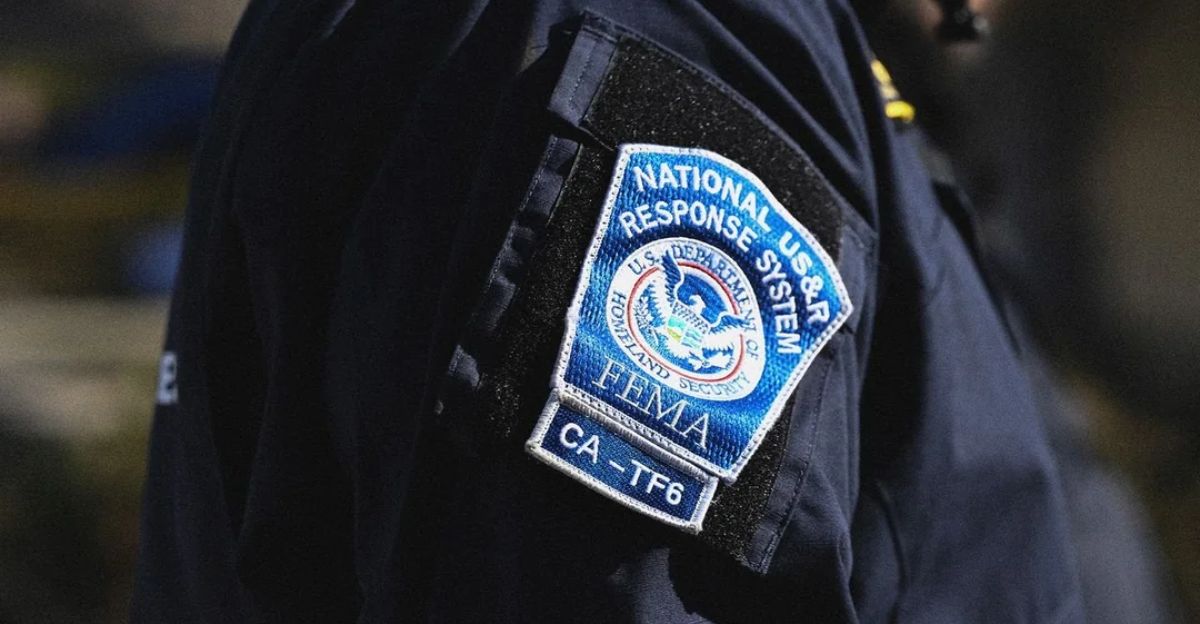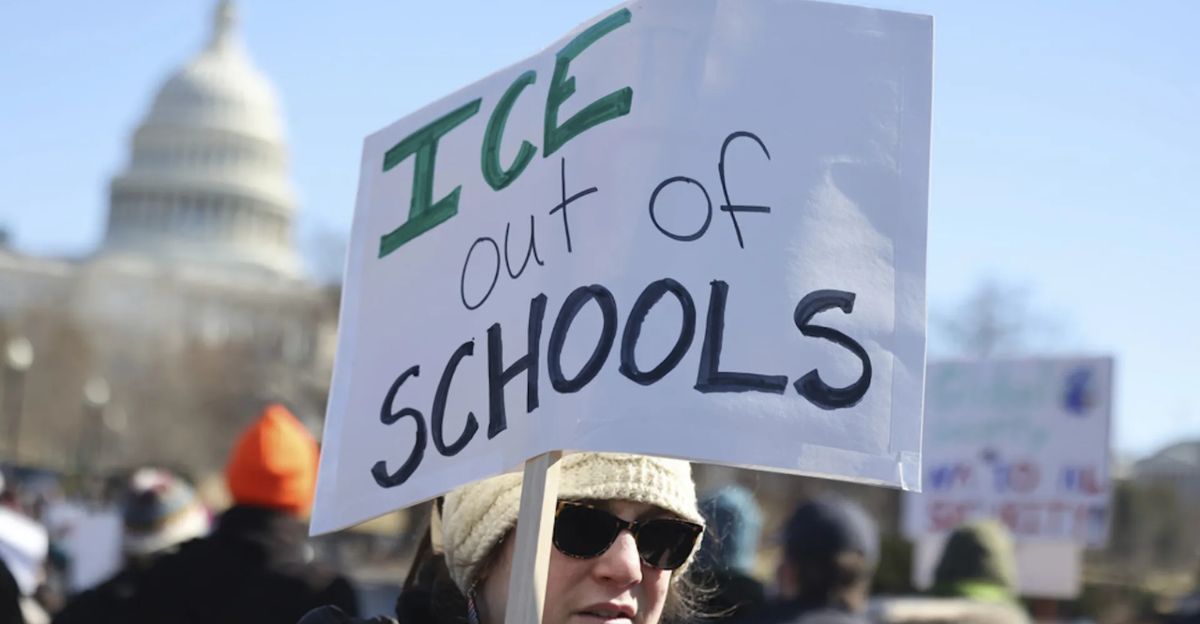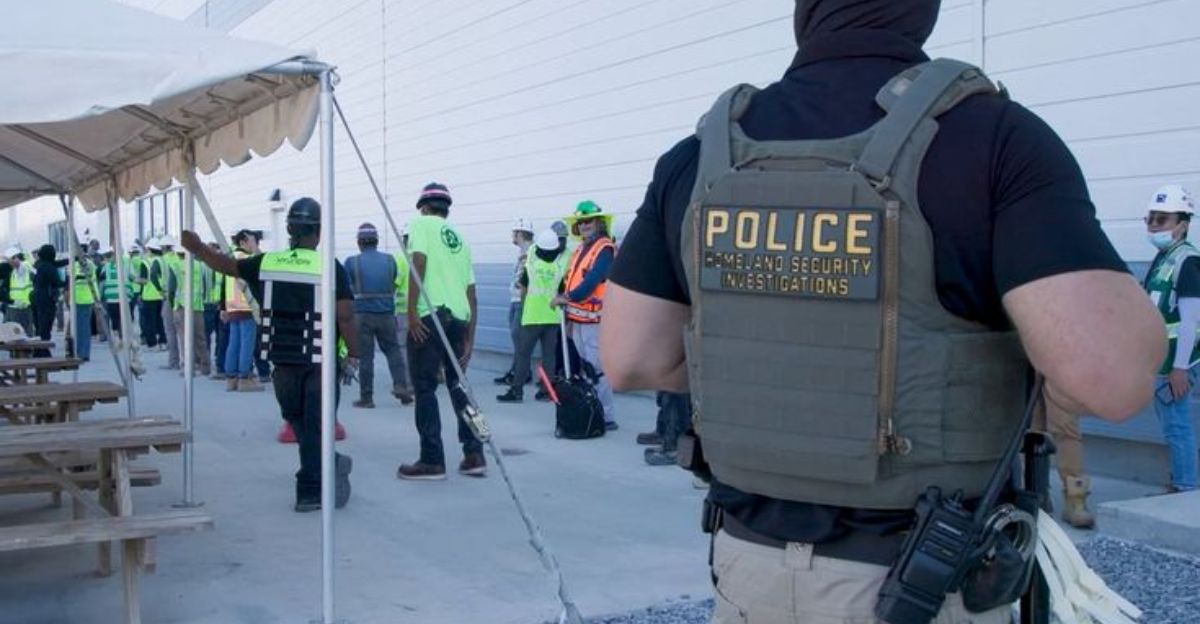
The U.S. Immigration and Customs Enforcement (ICE) has reached an unprecedented high, detaining 65,000 to 66,000 migrants as of mid-November 2025. This surge coincides with the intensification of enforcement operations under the Trump administration, marking a record high.
Significant media coverage emerged on November 23-24, 2025, spotlighting the startling figures released by ICE and the Department of Homeland Security. Analysts are questioning the causes behind this unprecedented increase in detentions and what it might mean for immigration policy under the current administration. This escalation not only disrupts immigrant lives but could reshape the future of immigration enforcement in America.
Arrest Pace Accelerates

Since October 1, 2025, ICE has increased arrests to approximately 1,200 daily, setting a new record in operational tempo. In October alone, ICE and Customs and Border Protection (CBP) recorded 41,641 detentions, with ICE being responsible for 36,646 of those cases.
This rapid pace marks a striking contrast to the prior administration’s approach, which saw daily arrests at much lower levels. Observers suggest this might not be a fleeting uptick, but rather a new standard for ICE’s operations, a shift that has raised vital questions: Can the current system sustain such a level of daily arrests without strain?
The January Baseline

To fully grasp the current situation, it’s essential to look back at January 2025. When Trump returned to office, ICE had fewer than 40,000 migrants detained. By late September, this number had climbed to around 60,000. However, a significant spike occurred from October 1 to mid-November, during which the population jumped to over 65,000, a staggering 5,000 added within just six weeks.
This swift transition signals a pivotal shift in immigration strategy, influenced by White House directives and enhanced enforcement capabilities, representing a decisive change from earlier gradual approaches to a far more aggressive stance.
Detention Beds Expand

The remarkable escalation in ICE’s capacity was enabled by the “One Big Beautiful Bill Act,” passed earlier in 2025, which allocated $45 billion for expanding immigration detention. Before this act, ICE had around 41,500 authorized beds. The new funding increased this capacity to 100,000 beds—adding space for 58,500 additional detainees.
By November 2025, ICE’s detention numbers hit 65,000, leaving 35,000 beds still available. This strategic move indicates that the administration is poised to fill these empty beds, demonstrating a significant commitment to ramping up immigration enforcement and detention capabilities.
The Operational Trigger

On October 1, 2025, ICE initiated a comprehensive enforcement campaign, setting internal arrest targets at 3,000 daily apprehensions. While actual arrests averaged over 1,200 per day, a marked increase, this remains short of the ambitious goal.
However, the intent behind these operations is clear: to maximize detention and expedite deportation processes systematically. This approach is not incidental; it stems from a purposeful decision to increase enforcement, as articulated by key figures such as Border Czar Tom Homan. This well-coordinated initiative signifies a significant shift in policy direction from the top.
Interior Raids Intensify

Interestingly, the 1,200 daily arrests occur predominantly within the U.S. interior, not just at the borders. ICE has launched aggressive workplace raids, apartment complex sweeps, and courthouse operations in major cities, including Los Angeles and New York.
High-profile collaborations have emerged, such as FEMA facilitating the identification and apprehension of migrants. This heightened activity has sparked tension with local law enforcement, challenging Trump’s earlier commitment to focusing only on undocumented immigrants with criminal backgrounds. Observers describe the raids as “aggressive” and “relentless,” emphasizing the operational shift in ICE’s tactics.
Communities on Edge

The increased frequency of ICE’s raids has left immigrant communities across the nation feeling vulnerable and uncertain. A resident of Chicago shared, “We never know if today will be the day someone we know gets taken.” Reports indicate heightened anxiety among families, with many fearing their loved ones could be detained at any moment.
These feelings are echoed by community leaders who emphasize the devastating impact that this surge in arrests has on local populations, creating an atmosphere of fear that disrupts everyday life and undermines community trust.
Ramping Up Deportations

With ICE operating at such a capacity, the implications for deportations are significant. Officials report an intention to expedite removal processes for detained migrants. The Trump administration’s focus on maintaining a high-volume deportation pipeline is part of its broader immigration strategy designed to enforce stringent immigration policies.
As daily arrests lead to increased numbers of deportations, analysts express concern about the human toll involved, prompting civil rights advocates to raise alarms over the consequences of these targeted initiatives on vulnerable populations.
Political Implications

The ongoing uptick in ICE operations and detentions coincides with a politically charged climate surrounding immigration policy. Experts infer that this aggressive approach is not only a response to emerging societal pressures but also part of broader electoral strategies.
The Trump administration appears to be solidifying its stance on immigration ahead of upcoming elections, where immigration enforcement could be a pivotal talking point. Still, critics argue this strategy raises ethical questions about the treatment of detained migrants and poses a potential backlash against the administration.
Community Resistance

In response to this surge in ICE activity, various advocacy groups are mobilizing to resist increased enforcement measures. Community organizers argue the raids harass innocent families and destabilize neighborhoods.
A local activist stated, “We will not remain silent; we are fighting for our rights and those of our neighbors.” Legal challenges are also surfacing as groups seek to protect immigrants from what they perceive as aggressive and unjust actions by ICE. This growing resistance underscores the deep divisions within American society over immigration policies and practices.
The Human Cost of Detention

The rising numbers of detained migrants signal a growing human cost, with stories emerging of families torn apart. Numerous detainees also face uncertainty about their futures and prolonged separation from children and loved ones. Reports portray the emotional turmoil faced by migrants, with many expressing fear and anxiety about the prospect of removal.
As deportations surge, advocates warn of potential repercussions on mental health and well-being, emphasizing the need for compassion amidst what many consider an escalating humanitarian crisis.
Expert Insights on Detention Policy

Analysts specializing in immigration policy warn that current trends could have lasting effects on the U.S. landscape. The surge in arrests and detentions could reshape immigration enforcement practices for years to come. “This new enforcement baseline creates a reality where more families will be affected by these policies,” stated an immigration policy researcher.
Such perspectives highlight the need for comprehensive immigration reform to address systemic issues rather than relying solely on enforcement measures that may violate human rights.
The Role of Local Law Enforcement

The collaboration between ICE and local law enforcement agencies raises concerns about the erosion of trust between communities and police. In sanctuary cities, where policies traditionally protect undocumented immigrants, tensions are escalating. Local police officers report feeling conflicted, as they balance their duty to uphold the law with the welfare of their community.
“We want to protect our communities, but the fear of deportation complicates that,” noted a police officer in a sanctuary city. This ethical dilemma exposes the challenges at the intersection of immigration enforcement and community safety.
Looking Ahead: Policy Changes?

As the current administration maintains its focus on high-level arrests and detentions, questions arise about potential long-term policy implications. Will this aggressive approach invite further scrutiny and calls for reform? Analysts argue that shifting public opinion on immigration could prompt changes in policy priorities.
“If advocates can demonstrate the human impact of these policies, there could be a push for change come the next election cycle,” suggested an immigration rights lawyer. This important crossroad may influence the future of immigration enforcement in the U.S.
A Nation Divided

The dramatic surge in ICE detentions and arrests reflects a deeply divided American landscape on immigration policy. As communities remain on edge, the complex interplay between enforcement, community trust, and human rights continues to evolve.
The stories of countless individuals caught in this struggle serve as poignant reminders of the need for balancing national security with compassion. With the stakes higher than ever, the unfolding narrative surrounding immigration enforcement invites widespread attention, sparking conversations about the principles that define America’s values as a nation of immigrants.
Sources
U.S. Immigration and Customs Enforcement (ICE) Department of Homeland Security (DHS) Enforcement Data Release (November 2025)Board of Immigration Appeals Case Filing Data (October-November 2025)U.S. District Court, Northern District of Illinois Detention Order (November 2025)U.S. Congress “One Big Beautiful Bill Act” Appropriations Record (2025)Washington Times ICE Detention Record Coverage (November 23, 2025) CBS News ICE Population Record Report (November 6, 2025) Axios Tom Homan Deportation Target Statement (October 22, 2025) Newsweek Administration Deportation Projection Report (October 23, 2025) CNN Illinois ICE Arrests Court Hearing Coverage (November 12, 2025) New York Times ICE Interior Enforcement Investigation (June 11, 2025) Reuters Immigration Legal System Strain Report (November 20, 2025)